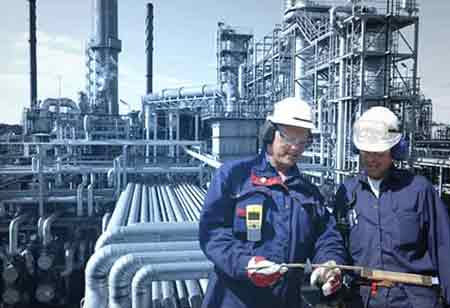Thank you for Subscribing to Energy Business Review Weekly Brief
What You Need to Know About Artificial Lift?
The pressure gradient within the natural oil reserves is increased by the application of artificial lift systems to surge its upward movement with the application of minimal pressure from external sources.

By
Energy Business Review | Tuesday, April 04, 2023
Stay ahead of the industry with exclusive feature stories on the top companies, expert insights and the latest news delivered straight to your inbox. Subscribe today.
Compressed natural gas is pumped into the wells to establish the required pressure inside the wells for the pumping. Upon the injection of the gas, it reduces the pressure at the bottom of the wells by reducing the viscosity of the fluids and improves the motion of the fluids to the surface
Fremont, CA: The pressure gradient within the natural oil reserves is increased by the application of artificial lift systems to surge its upward movement with the application of minimal pressure from external sources. The production rates are upped by the application of the artificial lift as they directly mount up pressure inside the reservoir, as the majority of them lack the thrust to stimulate the natural movement of the oil from the bottom to the surface.
Wells having adequate pressure build-up in the initial years of extraction needs the use of artificial lifts gradually as time goes by due to the drop in pressure gradients. Modern-day oil rigs and wells are seen to be equipped with complex extraction units and employ the use of diverse lift systems. Some of the most commonly used lift systems include the pumping and gas lift systems, and let’s take a look at them.
Beam pumping
One of the most commonly used systems in carrying out the process is known as beam pumping, in which the well is made to be engaged from below and up from the surface to increase the pressure and push the oil to the surface of the units. They are a familiar site to be seen at the offshore sites as they have sucker rod strings, rod pumps, and beam pumps.
The beam pumping system holds the back-and-forth movement steadily above the surface, which is then connected to a sucker rod, which is generally made up of a group of strings that plunge deep down into the wellbore. The sucker rods are attached to the sucker rod pumps, which are installed as a part of the tubing string adjacent to the bottom of the well. Similar to the working of pistons in a cylinder, the rod string, sucker rod, and sucker rod pump operate in response to the back-and-forth motion of the beam pumping system. The oil is brought about to the shore by the action of the sucker rod pump from the reservoir through the wells. Beaming pumping systems are characterized by the presence of casing, power fluids, tubing, perforations, and turbine pumps.
The pumping cycles range to 20 motions in a minute and are powered through electronic or gas systems known as prime movers. Speed reducers are employed to ensure the smooth movement of the beam systems while the engine operates at 600 revolutions per minute.
Gas lift pumping
Compressed natural gas is pumped into the wells to establish the required pressure inside the wells for the pumping. Upon the injection of the gas, it reduces the pressure at the bottom of the wells by reducing the viscosity of the fluids and improves the motion of the fluids to the surface. Recycled gases from the wells are usually injected into them for the purpose of lifting the gases to the surface. Gas lift systems are considered the aptest solutions for carrying out offshore oil extractions. The compressed gas is fed into the system by having multiple entry points at the casing tube annulus known as gas lift valves. As the gas enters the casing tube through different entry points, they form bubbles that lighten the fluids and lower the pressure associated with the extraction process. Major components inside the gas lifting systems are tubing, casing annulus, gas lift valves, and reservoir systems.
The majority of the wells across the globe use beam pumps as their primary choice, which is followed by the use of gas lifts, electric submersible pumps, and hydraulic ones.






